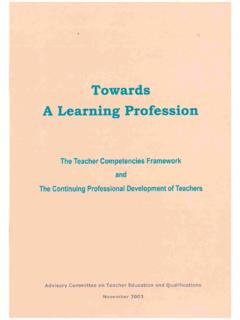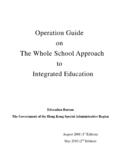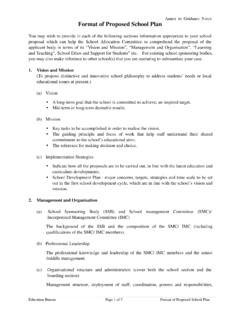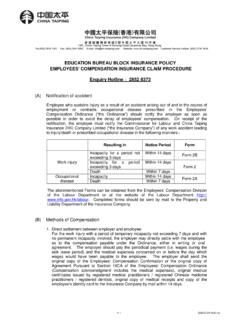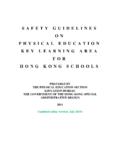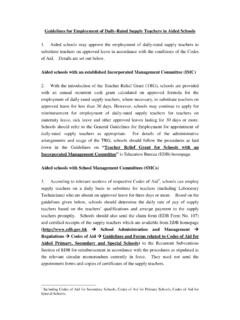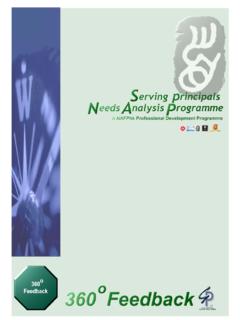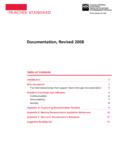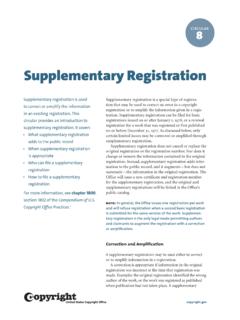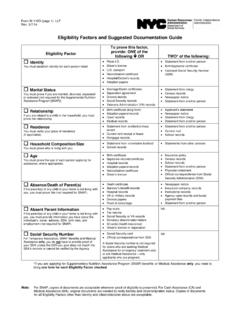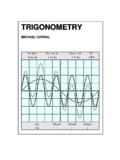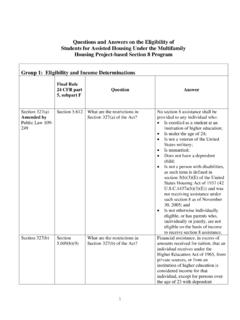Transcription of Economics Curriculum and Assessment Guide (Secondary 4-6 ...
1 Personal, Social and Humanities Education Key Learning Area Economics Curriculum and Assessment Guide (Secondary 4-6) supplementary Document Prepared by CDC-HKEAA Committee on Economics (Senior Secondary) 1 Introduction This is a supplementary document to the Economics Curriculum . It is prepared by CDC-HKEAA Committee on Economics (Senior Secondary) in July 2013 for the purpose of enhancing teachers understanding of the requirements of each topic. Teachers and students are suggested to use it alongside with the Economics Curriculum and Assessment Guide (Secondary 4-6) 2007 jointly prepared by Curriculum Development Council and the Hong Kong Examinations and Assessment Authority. General notes to the document (1) The first three columns are extracted from Chapter 2 of the Economics Curriculum and Assessment Guide (Secondary 4-6) 2007 ( sections and ).
2 (2) The part titled elaboration of the Curriculum contents indicates the knowledge, concepts and skills that students are expected to acquire. This part is effective immediately and applicable for Hong Kong Diploma of Secondary Education (HKDSE) Examination in year 2014 and onward. (3) The part titled fine-tunings highlights the simplified requirements to four sub-topics of the Curriculum , which is effective from S4 in 2013/14, applicable for HKDSE Examination in year 2016 and onward. (4) The contents under the part titled updating in Elective Part 1 is effective from S4 in 2013/14, applicable for HKDSE Examination in year 2016 and onward. It is updated due to the enactment of the Competition Ordinance in Hong Kong in June 2012.
3 (5) of this document introduces the short-term measures to the Public Examination and School-based Assessment to be implemented after the review of NSS Curriculum and Assessment conducted in 2012-13. 2 Compulsory Part Topic Key points Elaboration of the Curriculum contents Fine-tunings A Basic Economic Concepts Economics as a social science Students are expected to understand and illustrate with examples that Economics is a study of human behaviours, how individuals and societies decide on the use of scarce resources by referring to the postulate of constrained maximization. Students are NOT expected to grasp the concepts on methodology (scientific method) in the study of Economics . Scarcity, choice and opportunity cost (i) The source of economic problems: scarcity Unlimited wants and limited resources Students are expected to understand the (i) meaning of scarcity, (ii) relationship between scarcity and choice, (iii) relationship between scarcity, competition and discrimination, and (iv) differences between scarcity and shortage.
4 Free and economic goods Students are expected to (i) understand the meaning of good, the definitions of free good and economic good, and (ii) be able to give examples of free good and economic good. 3 Topic Key points Elaboration of the Curriculum contents Fine-tunings (ii) Choice and opportunity cost Economic decisions involving choices among alternatives Concept of cost in Economics Students are expected to understand the definition of opportunity cost and explain (i) the relationship between choice and cost, (ii) why only the highest-valued option forgone is counted as cost, and (iii) why resource spent in the past such as past expenditure, which is irrecoverable, is not a cost though the term sunk cost is NOT required.
5 Students are expected to (i) identify and calculate the cost involved in choosing an option, identify and distinguish explicit cost and implicit cost, and (ii) explain whether and how cost changes under different circumstances. Interest as the cost of Students are expected to understand that decision making 4 Topic Key points Elaboration of the Curriculum contents Fine-tunings earlier availability of resources on the use of resources may involve an inter-temporal choice. From this perspective, they should be able to explain (i) why interest can be regarded as an opportunity cost ( the cost of earlier availability of resources), and (ii) how interest rate, present consumption and saving are related. Students are NOT expected to calculate present value.
6 Students are expected to understand the relationship between interest rate, investment and money demand. However, it could be discussed under the topics of macroeconomics. The three basic economic problems (i) What to produce? How to produce? For whom to produce? Students are expected to (i) understand the meaning of each basic economic question, and (ii) be able to illustrate them with examples. (ii) How society tackles the basic economic problems By society s customs and traditions Students are expected to give examples of each method in tackling these economic problems. 5 Topic Key points Elaboration of the Curriculum contents Fine-tunings By government decisions By the market mechanism ( Illustrations by examples only.)
7 All theories on types of economic systems NOT required) (iii) Private property rights and its importance in a market economy Students are expected to (i) understand the meaning of private property rights - exclusive right to use, - exclusive right to receive income, - right to transfer, and (ii) explain why private property rights are important in a market economy: - clear delineation of private property rights is a prerequisite for the use of price mechanism by which resources could be allocated to the highest-valued users. Specialization and exchange Exchange as a condition for specialization Students are expected to understand that exchange is a condition for specialization. Circular flow of economic [Note: The discussion of circular flow of economic activities 6 Topic Key points Elaboration of the Curriculum contents Fine-tunings activities (i) Consumption of households and production of firms can be scheduled in different ways.]
8 For instance, it can be treated as an introduction to Topic F Measurement of Economic Performance .] (ii) The relationship among production, income and expenditure Students are expected to (i) understand and sketch a well-labelled circular flow diagram for a closed economy, and (ii) understand the relationship among production, income and expenditure. Positive and normative statements Distinction between positive statements and normative statements Students are expected to (i) understand the characteristics of positive statements and normative statements, for instance, - whether value judgment is involved, - whether they are refutable by facts, and hence disagreement to them can be settled by appealing to facts, (ii) give examples of normative and positive statements, and (iii) express their normative views to economic issues, conduct positive analysis on these views, and make 7 Topic Key points Elaboration of the Curriculum contents Fine-tunings informed judgment on the arguments/policies on the economic issues.
9 B Firms and Production Ownership of firms ( Firm as a unit that makes decisions regarding the employment of factors of production and the production of goods and services) Students are expected to understand the meaning of firms. (i) Forms of ownership Public ownership Students are expected to (i) understand the meaning of public ownership, and (ii) give examples of organizations or institutions in Hong Kong operating under public ownership. Private ownership: sole proprietorship, partnership and limited company ( Classification of partnership NOT required) Students are expected to (i) classify a private firm into sole proprietorship, partnership, private limited company or public limited company, and (ii) understand the key features including legal status, liability, number of owners, etc.
10 Of different forms of private ownership. 8 Topic Key points Elaboration of the Curriculum contents Fine-tunings Students are expected to apply their knowledge in this topic by comparing the features, and hence the advantages and disadvantages, of different types of ownership when they are given a concrete problem / situation. Students are NOT expected to grasp the documentation involved in setting up business units. (ii) Limited and unlimited liability Students are expected to (i) understand the meaning of limited liability and unlimited liability, and (ii) identify the types of ownership that the owners could enjoy limited liability. (iii) Shares and bonds as sources of capital ( Classification of shares and bonds NOT required) Students are expected to understand the (i) key differences between shares and bonds, (ii) advantages and disadvantages of issuing bonds and shares in raising capital, and (iii) advantages and disadvantages of buying bonds and shares from small investors point of view.

